The following is an electronic reproduction of a centenary brochure, published in 1955, giving the history of the congregation in its first hundred years . There are very few hard copies left but an electronic PDF copy is available, free of charge, on request.
HISTORY
GAIRBRAID CHURCH OF SCOTLAND 1855-1955
FOREWORD
IN this Centenary Brochure we have sought to produce something which will commend itself to all members and friends of Gairbraid Congregation. This has been no easy task, as we have been conscious of many among us who have long memories, so far as the congregation’s life is concerned, and also those who have not, We have tried, therefore, to bring to focus that, in our congregational heritage, which belongs to us all. May all who read these pages be led thereby to thankful acknowledgment of the blessings which have been ours, and to confident expectation of commensurate blessings yet to come.
The only valid reason for writing the history of any congregation is there being something to tell about work done for God. We sincerely trust this Brochure will justify its existence on that ground, and, in doing so, we shall be very disappointed if the narrative is not the means of confirming and increasing our faith in God, as well as stimulating us to increased zeal and earnestness in His work.
We have endeavoured to avoid, wherever possible, the singling out of any one individual’s work, other than that of the various Ministers, lest it should appear invidious to others. There are many men and women who have worked well for our Church in the past, and many who are doing good work today, but we feel sure they will be the last to complain of our expedient silence. There may be errors, as there are doubtless imperfections, in the narrative, but these have not risen through want of care. Advantage has been taken of documents and records kindly supplied by various friends.
THE VILLAGE
SINCE the story of a congregation’s life is a human story and necessarily interwoven with the surroundings of the church, a few facts concerning the district, before it lost its individuality, may prove interesting, as many far reaching changes have occurred.
The name ‘Gairbraid’, which means the short neck (of land) or gully, has been, from time immemorial, the Gaelic name of the Estate whose mansion house stood at the top of what was once a magnificent avenue of beech trees, the avenue being ‘Gairbraid Avenue’.
In ancient times the lands of Gairbraid, which were formerly church lands held by rentallers under the Archbishopric of Glasgow, belonged to a family called Hutcheson. George Hutcheson purchased the Estate of Gairbraid in the year 1600. Some years later Ninian Hill, son of Mrs. Ninian Hill (George Hutcheson’s widowed sister) and nephew of George Hutcheson, succeeded to the Estate. Ninian was succeeded in turn by his son Hew Hill who, at his death, left an only daughter, Mary Hill, who succeeded to the Estate. Mary married Robert Graham in 1761 or 1762, and it is evident that the lands possessed by them must have been very extensive, as Graham is reported to have stated, that, when he attended the Barony Church in Glasgow, if he chose he could ride all the way on ground which formed part of Gairbraid Estate.
Mary Hill and Robert, her husband, had a plan prepared some years after their marriage, for the building of a town on the lands of Gairbraid, and this proposed town was to be called Maryhill. After her husband’s death in 1804, Mary Hill reverted to the use of her maiden name, and, as the last of the Hills of Gairbraid, she died at her residence on the 15th July 1809, in her eightieth year. Mary and Robert had two daughters, Lilias and Janet; Lilias succeeding to the Estate. In 1836 Lilias Graham died, and Janet’s son, John Dunlop, (Mary Hill’s Grandson), succeeded to the Estate. It was from this gentleman that a feu was granted permitting the work to be commenced on the erection of Gairbraid Church in 1858.
The beginning of the village might be said to date from about 1750 when a
factory for the printing of cotton articles was opened on the banks of the then
pure and clear River Kelvin. This work proved prosperous and attracted numerous
workers to the locality for whom a row of dwellings was erected. This row of
houses was situated at the foot of the brae in what is now Bantaskin Street. From the beginning of
the nineteenth century this row was known as ‘Botany’. The name alluded to the
settlement in Botany Bay, Australia, where many men at that time
were being deported. The factory or print- work, as it was then called, after
changing hands many times was eventually acquired by the Corporation of Glasgow
in 1872 in order to erect the present Gas Works.
About 1790 another work appeared on the banks of the Kelvin, namely Dalsholm Paper Works, and since then the manufacture of paper has been carried on. These two Works formed the beginning of the village of Maryhill, but a further addition to the population was brought about through the construction of the Forth and Clyde Canal.
Work on the Canal was commenced in 1768 at Grangemouth, under the supervision of John Smeaton, the designer of the famous Eddystone Lighthouse. By 1773 the Canal was navigable from the River Forth to Kirkintilloch, and in 1775 it was extended to Stockingfield (near Lochburn Road), but unfortunately, due to lack of funds, work was stopped at this point. An appeal was made to the Government and in 1784 a grant of £50,000 was obtained. This money was realised by the sales of the Estates of the followers of Bonnie Prince Charles which were forfeited after the unfortunate rebellion of 1745. This sum of money enabled the company to proceed with the completion of the canal from Stockingfield to Bowling, and on the 28th July, 1790, the canal was officially opened.
The success attending the opening of the canal also gave a stimulus to various
industries along its route, of which a share fell to Maryhill. The Canal
Company saw that a revenue might be derived from accommodation being given for
the building and repairing of boats to be used in canal traffic, consequently a
large basin was constructed alongside the canal at the point where the canal
locks skirt Maryhill Road. Adjoining this basin they built a dry-dock, known as
Kelvindock, after which the village had been popularly called until ‘Maryhill’
superseded the name of Kelvindock in 1841.


The growth of the village was now
slowly but surely increasing as the various industries were introduced
to the
district. In 1821 there was a population of approximately 1000, whilst
by 1829
this figure had risen to approximately 1300 and, it is recorded, in the
same
year there were 23 ‘licensed houses’ or 1 to every 57 of the
inhabitants,
children included. At this point it is worthwhile mentioning that John
Dunlop
of Gairbraid House founded in 1829 the first Temperance Society, not
merely in Scotland but in Britain. By 1841 the population had
grown to 2,552 and, among other industries, there were now iron
foundries and
collieries in the district.
By the 1870’s so many buildings had been erected that the old Village had lost much of its rural aspect, and the population had risen to 5883. The Author of ‘Country Houses of Old Glasgow Gentry’ gave a description of Gairbraid House and its grounds in 1878 which vividly illustrates the transformation of the peaceful country village into an industrial town. To his dismay he discovered that ‘the magnificent avenue of beech trees had been cut down, the woods on the banks of the Kclvin had been ruthlessly swept away, and the old house stood naked and forlorn amidst a wilderness of free coups, etc. Instead of the singing of birds and the music of the soft flowing Kelvin, which of yore pleased the passer-by, I was shocked to hear the discordant voices of greeting bairns, the clang of machinery and the hiss of the steam engine!’
When Maryhill was annexed to the City in 1891 there was a population of 18,313 people.
CHURCHES OF THE VILLAGE
FOR more than forty years after the founding of the village it was without a place of worship. A very old residenter, born and brought up on a little farm which afterwards furnished a site for our church and Manse, is reported to have related how, at the close of the eighteenth century and for some years thereafter, the nearest churches were The Barony of Glasgow on the one hand and the Church of New Kilpatrick on the other. These were Established Churches, i.e., Churches which had accepted the Act of Parliament in 1712.
Sometime, about the year 1823, a movement to provide church accommodation in the village was set afoot, and it resulted in the erection of what is now Maryhill Old Parish Church. According to reports, this effort to build a place of worship was made voluntarily by the community at large, and it was not until the church was about to be opened that a decision was reached regarding its ecclesiastical connection— whether it was to be a dissenting meeting house or an established one. The majority of votes was for the ‘Establishment’, and accordingly the edifice became a ‘Chapel of Ease’ to the Barony which was later to be called Maryhill Old Parish. The Rev. R. M. Wilson was ordained in 1826. He remained there until May, 1847, the period of the ‘Disruption’.
To understand the causes which led to this dispute, which was followed with the
keenest interest in every town and village in Scotland and resulted in a
division in the Established Church, it is necessary to know a little of the
early history of the Presbyterian Church. The organisation of this church was
laid down by John Knox in the ‘First Book of Discipline’. One of the important
principles stated there is that ‘It appertaineth to the people and to every
congregation to elect their Minister’.
This principle, of course, was at
variance with the practice of the Church of England, where the Sovereign of the
State was recognised as the Head of the Church with the authority to
appoint Bishops, who in turn, appointed the lower clergy. Various attempts were
made by the Crown during the early part of the seventeenth Century to abolish
this dangerous form of democracy in the Church of Scotland, repugnant to
Sovereigns who regarded themselves rulers by ‘Divine Right’. Relief came in
‘688 with the accession of William and Mary when patronage, the right of the
aristocracy and land owners to appoint Ministers, was abolished. This
concession, however, was short lived, as in 1712 an Act of Parliament was
passed ‘to restore the Patrons to their Ancient Rights of Presenting Ministers
to the church vacant in that part of Great
Britain called Scotland’. This Patronage Act was
passed by a Government, formed of the aristocracy of the Country. All the
churches accepted the 1712 Act, except a handful who formed Secession and
Relief Churches, who were referred to as ‘Dissenters’, and in 1838 occurred the
now famous ‘Auchterarder Case’.
In the Parish of Auchterarder 287 out of 300 male heads of families expressed
their objection to a minister presented by a patron, and they requested the
patron to make another nomination. This he refused to do, and he appealed to
the Civil Courts who supported him. In 1842 the General Assembly addressed
their famous ‘Claim of Right’ to the Queen and her Government but, since it
went unheeded, in the following year 474 ministers led their supporters from
the state controlled Church to form the Free Church of Scotland. In Maryhill,
the minister of the Established Church and his managers decided to support the
new church, the majority of the congregation concurred, and so, on the 20th
February, 1848, the Free Church of Scotland opened in Maryhill. Very little is known about the Catholic Community of Maryhill from 1816 until
the founding of the Chapel in 1849.
Very little is known about the Catholic community of Maryhill from 1816 until the founding of the chapel in 1849. A traditional story tells us that an organised procession, headed by a Piper, walked from Maryhill every Sunday to St. Andrews Chapel in Clyde Street to hear Mass. In 1841 a small hall was used at the back of the Black Bull Inn to celebrate Mass. This accommodation, however, soon became inadequate, owing to the influx of Irish people driven from their native land by the terrible famine of 1845—48. A more suitable temporary place of worship was therefore found in what was known as ‘The Oddfellows Hall, formerly situated at the Corner of Glencloy Street. The tenement building 1901-09 Maryhill Road now occupies the site. This hall, in which the Oddfellows held their Lodge, was rented at various times by four different religious bodies in Maryhill, as a temporary place of worship.
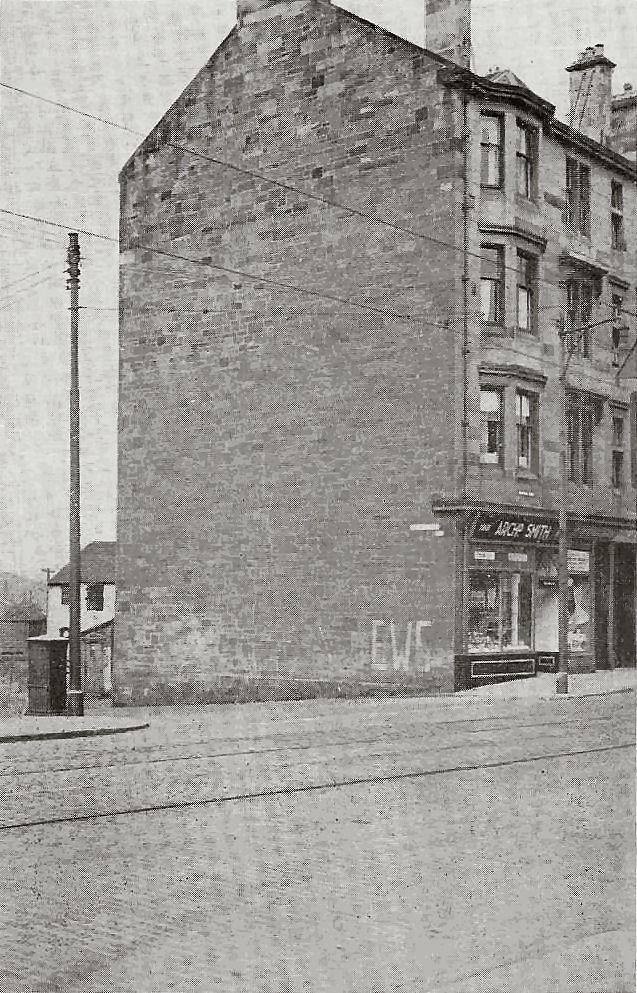
When the Disruption took place in 1843, the newly formed Free Church used it for a few Sundays and, after a short space of time, the members of the Established Church met in the Hall until May, 1847. Shortly after that date, the Roman Catholics rented the hall as a temporary place of worship until the Church of the Immaculate Conception was opened in 1851. Lastly, we ourselves, the United Presbyterian Congregation of Maryhill worshipped there from February 1855 to May, 1859.
The title “United Presbyterian” is derived in this way. In 1947 the Relief Church and the United Secession Church amalgamated forming the United Presbyterian Church. These two Churches had seceded many years previously from the Established Church to preserve, as they felt, their spiritual independence. The United Presbyterian Church possessed a number of outstanding characteristics. It was a strongly evangelical Church, passionately intent on proclaiming the great saving truths of the gospel. It was a democratic Church, giving full scope to all shades of opinion and all classes of society. Indeed the laity had more authority in ecclesiastical affairs than might have been expected. The Minister, for example, had no Say in the administration of the Church finance. Money matters were in the hands of the Managers who were often men who had attained prominence in the world of business.
Finally, the United Presbyterian Church was a progressive Church. It was liberal in theological outlook, and abandoned some of the more extreme tenets of the Westminster Confession, allowing liberty of opinion on points of doctrine ‘As did not enter into the substance of the Faith’.
Such was the background from which our congregation has arisen.
THE BEGINNING
How did our
Church come to be built? Here is the answer. About a hundred years ago the
Glasgow Presbytery of the United Presbyterian Church resolved to plant
churches in certain parts of the City and suburbs where the denomination was
not adequately represented, or not represented at 411. It was sympathy with
this movement, and encouragement from the Church Extension that led Dr. James
Robertson and the congregation of Shamrock
Street to look at Maryhill as a sphere for their
efforts towards church extension.
Maryhill was probably selected because it lay nearest to Shamrock Street, then the West End Church of Glasgow. Shamrock Street congregation having so far started the idea, Dr. Robertson and the Rev. Robert Niven took the initial act towards its fulfilment by walking to Maryhill, one day about the end of 1854, to spy out the land. The inspection confirmed the opinion that the sphere was a suitable one. Pioneer work suited Mr. Niven, who was a born missionary, and he agreed to undertake it.
He had only returned a few months previously from South Africa where for nineteen years he had laboured among Kaffirs. This fact had its significance, not only in so far as it was an earnest and vigorous effort on the part of Mr. Niven who undertook the work at Maryhill, but because of the interest in the young congregation which it awakened among many who were both willing and able to help it.
A suitable temporary place of worship was found in what was then known as the Oddfellows Hall. It was the ‘Public’ Hall of Maryhill and accommodated 250 to 300 persons. Due announcement was made of its opening as a place of worship in connection with the United Presbyterian Church, and that event took place on Sunday, 22nd February, 1855. The preachers on that occasion were Rev. Dr. Robertson, Shamrock Street, Rev. Robert Niven, and Rev. Dr. W. Anderson, John Street. The attendances were large. In the evening the hall was crowded to suffocation, the ante-room, which served as a vestry was crammed, and the trap door from one side of the room on the stairway was opened to allow people to hear, although they could not see the preacher, and many had to go away. From this date the services were continued three times every Sunday for some months.
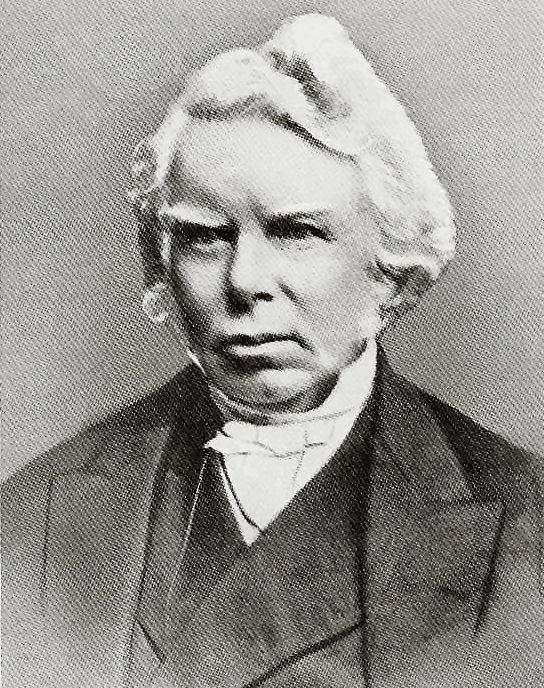
By the month of June it was evident that the numbers attending worship warranted immediate action, and on 16th July, 1855, application was made to Glasgow Presbytery for permission to become a fully constituted and erected congregation. This was granted by the Presbytery on 14th August, i85, and on the 28th October, the congregation gathered to participate in their first communion, presided over by Rev. Robert Niven. Though now formally constituted and equipped, the congregation was still without a minister, as Mr. Niven, although he had formed the congregation, did not consider the people with whom he had thus gathered as committed to him, nor he to them. There was complete freedom on both sides, had circumstances or inclination prompted the use of it on either hand. The congregation, however, neither sought nor desired a change of instrumentality, and on the 26th March, 1856, the Rev. Dr. Robertson of Shamrock Street Church, moderated in a call which was unanimously in favour of Mr. Niven. On 30th April, 1856, the Rev. Robert Niven was inducted as the first minister of Gairbraid Church. The congregational machinery was now complete, and all the usual agencies were in operation.
THE BUILDING OF THE CHURCH AND THE MANSE
The circumstances of the congregation worshipping in a hall was not, at all, favourable to its growth, and steps were therefore taken towards the erection of a Church. The members of the congregation were nearly all working people, but they subscribed liberally and, aided by the generosity of friends, funds were soon ingathered. Before long the state of funds permitted arrangements to be made for the building of the Church, and at this point it is interesting to note that, among the many contributions which kind friends sent towards the erection of the Church, none were more gracefully tendered or more gratefully received than those which came from Kaffir Natives in South Africa, the scene of Mr. Niven’s former labours.
The choice of a site for the Church was an important matter. Three places were under consideration—one beside the Odd- fellows Hall, where the congregation was worshipping; a second near the centre of the village, opposite the head of Kelvin Street (now Cowal Street); and a third in Wyndford. The last was ultimately chosen, and the erection of the Church commenced in the Summer of 1858 when Bailie McDowall laid the foundation stone. On Sunday, 1st May, 1859, the Church was opened for public worship when the Rev. Dr. Robertson preached in the forenoon.
The Church, for economy, was erected minus a spire, which was in the original design. A neat Gothic edifice with an open timbered roof, the greater portion of which is, however, not now visible. Without galleries the Church was seated for 450 and cost £1500.
After the opening of the Church, the congregation was found to be on a fairly good footing and could extend its arms to the district around, welcoming all who through choice or by special effort were brought within range of its influence. A glance at the communion roll of 1860, one year after the Church opened, shows some considerable extension. The congregation was now not merely one composed of Maryhill people, but drew its members from an area embracing points several miles from the Church. Financially the congregation was not strong, but the people were remarkably willing to give, according to their ability, and the efforts to raise funds for the Church building were so successful that, by February, 1860, it was reported that only £115.5s. was owing.
Early in 1863 it was suggested that a Manse should be erected, and a committee was appointed to carry out the project. The aim of the congregation was a moderate one regarding cost, as ‘the committee were instructed not to enter into a contract exceeding £600’. The progress of this undertaking was, however, interrupted by the projection of another. As already stated, the Gothic design furnished by the Architect for the Church included a spire, which was not erected, and a high timbered roof which unfortunately was. The roof certainly looked very well, but utility, so far as audibility went, was sacrificed to beauty. Many and grievous were the complaints about ‘not hearing’. A huge canopy was erected over the pulpit, the sight of which sometimes raised in the minds of the onlookers the thought of complete extinction to the unlucky minister on whom it might fall, but it did little else for the echo still remained. Weary of complaints and determined to banish the cause of them, the Managers consulted an Architect who recommended the construction of a ceiling half-way down from the ridge, and the erection of an end gallery. The work was quickly carried out from which a complete cure was found. The Church, though not now so elegant structurally, was acoustically perfect. The end gallery gave additional seating for 150, making a total of 6oo. The cost of this work was £230. This demand upon the finances of the congregation naturally checked, for a time, the progress of raising funds for the manse.
The progress of the congregation as regards numbers continued. Each year showed an increase, larger or smaller, according to the varying circumstances of the locality from time to time. An industrial community, the fluctuations in population of Maryhill were considerable. The membership of the congregation suffered severely when any unusual depression of trade occurred, owing chiefly to change of residence made necessary through change of employment. However, the balance as between loss and gain was always on the right side. It is evident that because of the fluctuations in numbers the Communion roll appears to have been very frequently and carefully revised, and no encouragement was given in these days to members to keep their connection with the congregation after they had removed from the locality. The following resolution testifies to this:
‘Agreed to communicate with members who have removed, that they make conscience of attending the approaching Sacrament of the Supper, and thereupon lift their certificates in order to join one or other congregation (in our own connection) in their neighbourhood’.
The communion seasons were fruitful in spiritual benefit to the congregation
and the Session strove to augment tile interest on these occasions. A
characteristic item in the Session records is gratitude expressed for
Sacramental blessings, and noted in some such manner as follows:
‘Had gladness, and a good day.’
The Manse scheme, which was adopted in 1863 but set aside temporarily for the more pressing need of remedying acoustic defects in the Church, was revived in 1866, and the congregation proceeded with the systematic gathering in of money. In this, as in other pecuniary enterprises, much was expected from the Minister. He did yeoman service, but the members of the congregation were not one whit behind in their zeal, personal liberality, and efforts to obtain help from friends. Considering the small membership of the congregation, it is really surprising how much they raised by themselves. Work soon commenced on the Manse and at Whitsunday, 1868, the Rev. Robert Niven was able to take possession of it. The total cost was £1040, including accessories.
In 1871 it was suggested by some of the ladies of the congregation that a bazaar should be held for the purpose of entirely wiping away the debt of £300 still outstanding on Church property. Necessary arrangements were made, the ‘Fair’ opened on 1st January, 1872, and on the following two days buying and selling was so satisfactory that sufficient money was raised to pay off every penny owing on the Church property.
The realisation of an aim, namely to clear all the debts, was kept in view by the Minister, and this led him to make a proposition which had occupied a prominent plan in his thoughts, but which, so long as the congregation was labouring under the burden of debt, he would not even have mooted. From the Church records of this particular time, it is evident that in the interest of the congregation and for the securing of its continued prosperity, rather than consideration of personal ease and comfort, Mr. Niven proposed that a colleague be obtained. On 26th March, ‘873, the Rev. James Moir Rae was ordained as Junior Pastor and was accorded a very hearty welcome by all, as he came with an excellent reputation as a preacher, and there were gratifying testimonies to his efficiency in Home Mission Work.
As the congregation, for a time, now ceased to be under the presidency of one Minister, it is interesting to note the point to which it had now attained. The membership was 228, not far short of four times the number which formed the congregation nearly seventeen years before, and the Sabbath School work was progressing very favourably. The finances of the Church were in a satisfactory condition, as the Treasurer bad in his possession a balance which enabled him to keep an easy mind, though he had now two stipends to pay instead of one.
The effort started eighteen years previously to rear a United Presbyterian Church in Maryhill had succeeded.
HARD YEARS - EXPANSION
The congregation
had, within and around it, all the elements of continued progress. This result
had not been attained without hard labour - uphill work, carried on frequently
under discouraging circumstances. Minister, Elders, Managers, Sunday School
teachers and members all worked with a will and, bit by bit, the cause
progressed until it could be said that a more compact and useful society, of
its own rank, did not exist within the denomination. It is impossible to read
the Session records without attaining a profound conviction of the fact that,
‘except the Lord build the house, they labour in vain that build it’.
At a meeting of the congregation on 8th January, 1877, Mr. Niven proposed his retirement and, amid many sincere expressions of regret, this was accepted. Mr. Niven had now laboured and resided in Maryhill for twenty-two years and, at a public meeting on 10th April, 1877, presided over by the Chief Magistrate and attended by the Clergymen and leading inhabitants of Maryhill, he was presented with many gifts. The tributes paid by his brother ministers, Rev. Mr. Shanks of Maryhill Parish and Rev. Mr. Girvan of Maryhill High Church, and many others, were alike honourable to him and to his congregation.
It now seemed that Mr. Niven was destined to enjoy a well earned repose from active labour, but he turned ill shortly afterwards and died on 12th October, 1877. A handsome mural tablet, in the vestibule of our Church today, bears testimony to a sainted memory.
For more than two years after the death of Mr. Niven the work of the congregation carried on without change. At the close of 1880 Mr. Rae fell into ill health and, as usually happens in such circumstances, a diminution, both in membership and resources of the congregation began. Mr. Rae at this time was only four years sole Minister of the Church, and the work of these years had been gradually telling upon a constitution never very robust. Though struggling with physical weakness, a natural buoyant disposition enabled him to go on doing his work as best he could for another two years. The members of Session who had shown him much kindness and consideration, besides relieving him in every way possible of the burden which the work of the pastorate entailed, now suggested that he should go on holiday for a season. A few days after arriving at Rothesay, on 21st February, 1882, he died in his thirty-eighth year.
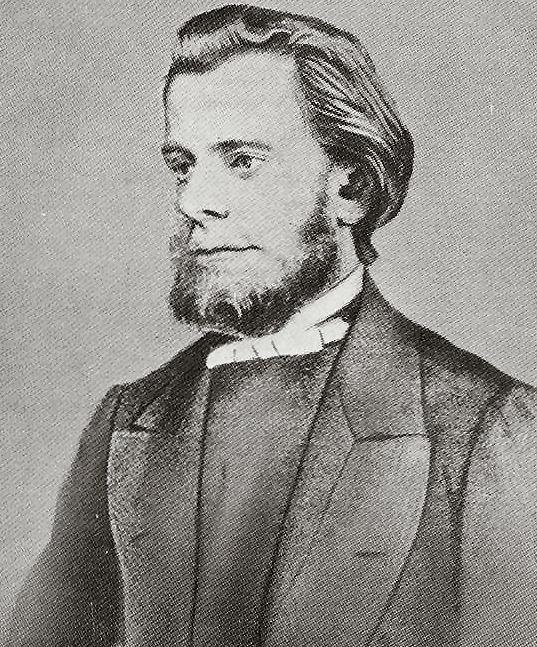
In 1880, the Caledonian Railway Company, in conjunction with the Road Trustees, desired to form a new canal bridge and to improve the roadway adjoining the Church. For this purpose they acquired a strip of ground belonging to the congregation, the extent of which was about 200 square yards, or less than one eighteenth part of the whole feu. For this ground, and to reimburse the congregation for outlay in forming a new approach, the Road Trustees paid the Managers nearly £400.
Though not progressive,and even exhibiting signs of decadence, the congregation by no means lost vitality. Very soon after the vacancy occurred steps were taken to obtain a successor to Mr. Rae. Eventually a hearty call was given to Rev. W. Duncan, Junior Minister at Midcalder, and he was inducted on 21st November, 1882. No sooner had Mr. Duncan entered upon his pastorate than the congregation began to grow again. In the first year thirty-eight people were added to the membership, the largest accession in any one year up to 1883. Energy and method, as before, characterised the operation carried on by the congregation under their new Minister. In 1884 the accessions were fifty-two, and in 1885 they were fifty-one. At the end of 1886 the membership stood at 312, and the congregational income was larger than ever.
While the material progress was fairly considerable, the educational and benevolent aspects of congregational life were not overlooked. Mission services and a Sabbath School were conducted in the Mission Hall in Maryhill Road for some time, until it was sold to the Roman Catholics for £600, and it was resolved to erect a Church Hall adjoining the Church which would be suitable for congregation as well as mission purposes. This was done in 1885, and so a very useful addition was made to the Church property, the cost of which was about £1500.
What strikes one most, as we read the records of these days, was the faith and energy that possessed those who were engaged in the active work of the congregation. They attempted great things for them who, in some respects, were but a feeble folk, and yet it would be unfair to leave out of this narrative the following extract from the Managers’ Minute Book—the date 13th December, 1893:
‘The Minutes having been read, Mr. X…. moved and Mr. Y…. seconded their adoption; whereupon Mr. Z…. began to lay before the meeting an ‘unca mournfu” tale of insult and injury, caused by the Bazaar Committee calling in question, and seeking an explanation of a departure he had made from one of the laws laid down and minuted at their first meeting. He was ruled out of order, but as the meeting, on taking a vote, was found to be in favour of hearing his pitiful tale, especially regarding his resignation, and he was allowed to continue his mournful digression. This caused a good deal of wordy warfare and raised the excitement to such a pitch that a number of the ladies had to leave the hall. During this discussion, he protested against a certain ruling of the Chair, marched boldly forward, and laid down the shilling fine. The quibbling at last focussed itself around the term “proceeds” upon which a good deal of logic was brought to bear, but with little effect. At length Mr. X…. , with a slow deliberate shot in the form of a masterly little speech, effectively silenced the beastly bruin who had taken possession of the meeting for a time.’
About 1894 and for many years afterwards the congregation sponsored a United Presbyterian Mission in the Lambhill district, employing a Missionary there, whilst at the same time Mr. Duncan along with many members of the congregation helped to carry on God’s work in that district.
On the other hand during the period of the eighteen-nineties a number of people migrated from Maryhill to the growing district of Anniesland and Mr. Duncan, with his usual foresight and initiative, realised that there was a desire from the immigrants for a United Presbyterian Church to be set up in Anniesland.
It was not long therefore before a U.P. preaching station was set up in Anniesland and this in turn very soon grew into Anniesland Cross Church. We incorporate here some notes from the first Kirk Session Book of Anniesland Cross Church:
‘Anniesland Cross Congregation is virtually a daughter of Maryhill United Presbyterian Congregation. On the suggestion and with the encouragement of their Minister, the Rev. W. Duncan, who regarded both the time and the place as suitable for the planting of a Church Extension Church, some members of the Maryhill Congregation resident in Anniesland district resolved to take the requisite means for carrying into effect the suggestion of having a United Presbyterian cause near their own doors. On making known in the locality their desire and intention in regard to this matter, other United Presbyterian members and adherents resident in the neighbourhood were induced to join with them in promoting a petition to the U.P. Presbytery of Glasgow for the opening of a preaching Station at Anniesland Cross, with a view to the formation of a congregation.
The Presbytery, in September, 1898, when the petition was before it for consideration, having regard to the rapid increase of population in the district of Anniesland, giving promise of a vigorous congregation in the near future, granted the request of the petitioners. Soon thereafter, with the help of grants which Mr. Duncan, who was at the time Secretary to the Presbytery’s Church Extension Committee, and had been given charge of the infant cause, had obtained, as well as sums of money which he had collected, a commodious hall (now the large hail of the Church Buildings) was built at the cost of £1450, and Sabbath Services were begun in August 1899.
NEAR the end of 1900 an event of outstanding importance in the history of our Church took place. The Union between the United Presbyterian Church and the United Free Church was consummated, and so in Maryhill there were now two U.F. Churches. The Rev. W. Duncan in collaboration with Rev. Mr. Gillison of Maryhill High Church agreed that, since the Church in Sandbank Street was pre-disruption, they should call themselves Maryhill United free Church, while we would bear the name of Gairbraid United Free Church. The Act of Unity was dated gist October, 1900. Now followed some peaceful years with the work of the congregation going on with increased vigour. The number of members on the roll around this period totalled 600 and the finances continued to keep in a healthy condition; whilst the various organisations, in connection with the activities of the Church, continued to thrive.
In 1905 the Church celebrated its Jubilee and there is an interesting record of these meetings in a booklet souvenir issued at that time. Two years later in 1907 Mr. Duncan celebrated his Silver Jubilee as Minister of Gairbraid. The celebration took the form of special services on Sunday, 17th November, 1907, and a social meeting was held in the Burgh Hall on the 21st November, when Mr. Duncan was presented with a cheque for £125, and Mrs. Duncan with a purse and £25. Many references to the good work which Mr. Duncan had accomplished were made by various speakers at the gathering, and Mr. Duncan was further presented with a copy of the Address and a copy was inserted in the Kirk Session Minutes, its term giving proof of the high esteem and regard under which Mr. Duncan was held by the congregation. It can be said that these years were years of consolidation and, while the congregation had its ups and downs, -- - - .the work went on with vigour. By 1913, when Mr. Duncan celebrated his 30th Anniversary as Minister of Gairbraid, the Country was then approaching the terrible catastrophe which so many of our congregation remember, the black day in August, 1914, when the forces of war were let loose throughout Europe.
During the next four years a period followed when the church throughout the land was put to a supreme test. In the field of battle she carried on the work of God and, at home, her organisations worked increasingly for the relief of the suffering and the comfort of the men who were fighting in the defence of right.
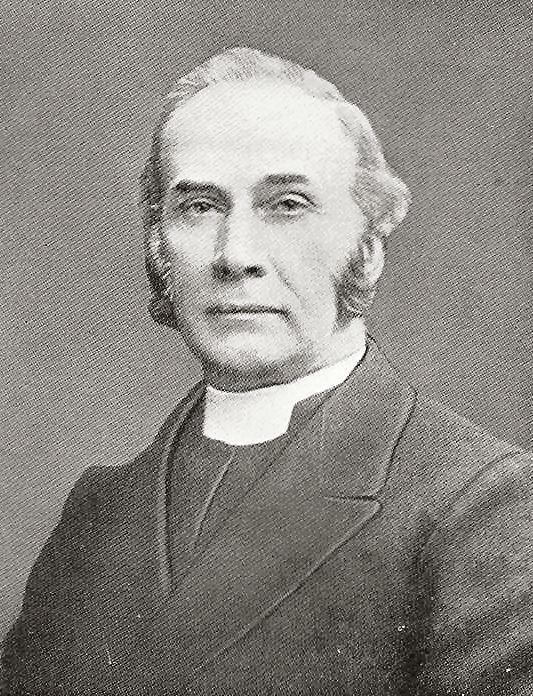
Gairbraid, as in the case of all congregations, did its share but, alas it also had to bear war’s burden of grief and sacrifice. The memory of these tragic years is still remembered by many of our older members and, as anniversary succeeds anniversary, the pictures of what might have been are conjured up.
Lives in the bloom of fresh young manhood were struck down, and many Gairbraid homes mourned their hero sons who slept in distant lands. The Roll of Honour for the 1914-18 Great War on the Communion Table contains the names of thirty-nine of our members who gave their lives.
In 1917 the Rev. Mr. Duncan who had laboured as Minister of Gairbraid since
1882 felt that, with the strain of the war years telling on him, he would like
the Session to appoint a helper. A call to the Rev. A Pender Crichton, MA.,
ED., was accepted, and he was inducted as colleague and successor in November,
1917. The work of the pastorage devolved mostly on the Junior Minister, and the
Minutes testify the willingness of both Minister and congregation to respond to
the heavy demands made on them for relief work during this period.
On 30th May, 1920, a Memorial Service for the men of the congregation who fell in the Great War was held and at this service the Communion Table and Roll of Honour were dedicated. Mr. Duncan and Mr. Crichton conducted the service, and the Minutes record that, touching and impressive, it stirred the large congregation present.
THE AFTERMATH OF THE STORM
The first few years after the end of the war was a period of great economic activity and expansion, and the Church had to make her contribution to meet the changing conditions. Locally, the expansion was most noticeable in housing, as several new Housing Schemes sprang up in the district, thus providing a field of work for the Church.
March 1924 saw another interesting event in Gairbraid. On the 17th of the Month Mr. Duncan attained his Ministerial Jubilee, having been inducted as Minister of Midcalder United Presbyterian Church on 17th March, 1874. The pastoral work of the Church had been for some considerable time almost entirely under the charge of the Junior Minister, Mr. Pender Crichton, and the virility of the congregation and the various organisations was in great measure, due to his energetic and earnest efforts to advance the Kingdom of God in the district, and to his loyal devotion to all Christian work. It therefore came as no surprise, but as a keen disappointment, when it was announced that Mr. Crighton had been appointed Director of Religious Instruction at the Jordanhill Training College. Mr. Crighton preached his farewell service on 5th April, 1925, to a crowded congregation. He had piloted Gairbraid through difficult years, and at his going many hearts were sad.
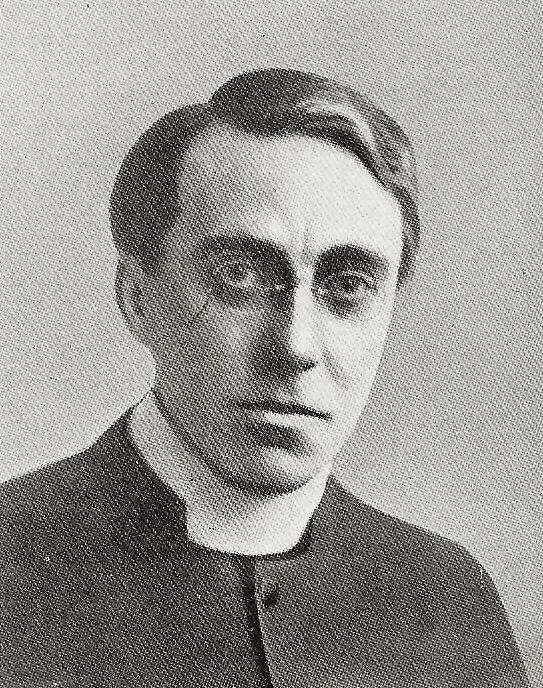
The vacancy brought about by Mr. Crichton going was filled by the appointment of Rev. F. S. M. Walker, B.D., Dennyloanhead, who was inducted as Junior Pastor on 24th November, 1925.
In 1926 the congregation raised funds for the installation of electric light, and this addition proved a great benefit and added immeasurably to the comfort and appearance of the Church.
About this time the question of the Union of the Churches came up for consideration. The union of the United Presbyterian Church withthe Free Church in 1900, forming the United Free Church, now meant that the two biggest religious bodies in Scotland, the United Free Church and the Church of Scotland, were carrying on similar Christian work, and they were almost indistinguishable in doctrine. The causes which had led to the Disruption in 1843, no longer existed, since the Patronage Act had been repealed in 1874, and other Acts in 1921 and 1925, and it was felt that, once again, the Church of Scotland should be united.
This question which had unfortunately far reaching effects gave rise to a certain amount of bitterness in many congregations, and, in this, Gairbraid was no exception. Despite calls for unanimity, some members decided to leave when finally in 1929 the Union was consummated.
Though still the Senior Minister of Gairbraid, the Rev. W. Duncan had not taken any active part in the Church affairs for a very long time, and therefore the Presbytery accepted his retiral in November, 1929.
Despite some reduction in membership, due to disjunction traceable to the Union of the Churches, the congregation and the organisations showed considerable strength, and at the Communions following the Union they were exceptionally well attended.
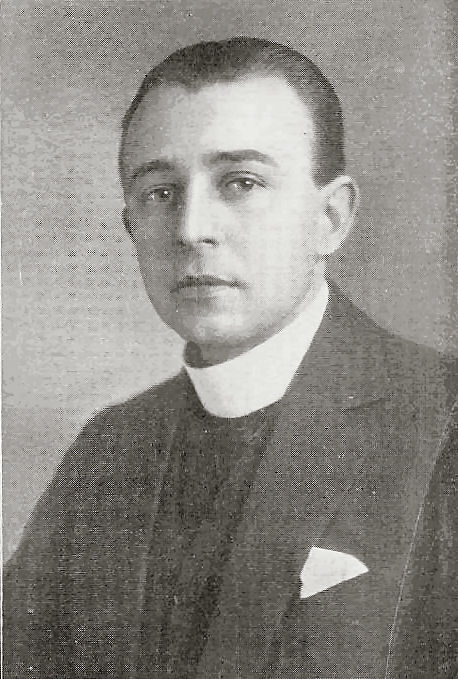
It is here that Mr. Walker must be given credit for the way he ministered throughout these difficult years, for not only had he the question of the Union to cope with in his congregation, but many other difficulties which at times must have weighed heavily on his shoulders. It was therefore with sincere regret that in November, 1930, Gairbraid heard that Mr. Walker had received a call from St Ninian's Church, Sanquhar.
Immediately following Mr. Walker’s departure Gairbraid was in danger of losing its identity, but it says much for the strength of purpose of the Office Bearers and the Congregation that the re-adjustments committee of the Presbytery, after a meeting with the Session, were able to report that Gairbraid was able to carry on as a separate unit. This committee further added that with a young and energetic Minister there was at the doors an ample field for Service to Christ’s cause and Kingdom. Luckily for Gairbraid such a Minister was available, and in May, 1931, an unanimous call was given to the Rev. Duncan Macdiarmid, M.A., of Brechin.
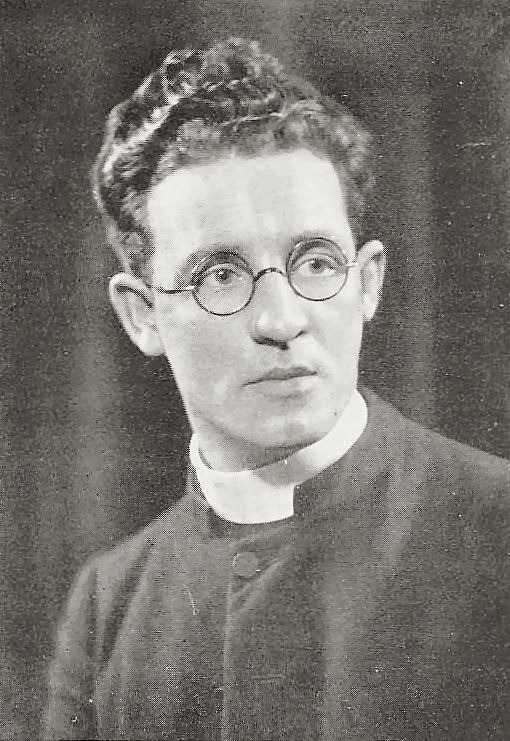
CONSOLIDATION - PROGRESS
Mr. Macdiarmid was inducted on 25th June, 1931, and it may be said that Gairbraid entered on a new era of prosperity and increased influence. Evidence of the power Mr. Macdiarmid was to wield in extending Gairbraid’s activities was soon forthcoming, and at 31st December, 1933, the number on the Communion Roll had once more come up to 500, and under the keen and energetic leadership of her Minister, Gairbraid Church and the organisations went from strength to strength during those years. Much that has made up our life as a Church from this period, contributing to our wellbeing and happiness and sense of unity, must go unrecorded. We, who have been together through those years know how to value them, and how, too, to value Mr. Macdiarmid’s unfailing interest in, and sympathy with, all our undertakings. These years were not without their trials and tribulations for both Minister and members alike. In the early thirties the economic depression which had been spreading throughout the world centred with particular gravity over Britain, and in Maryhill unemployment was widespread. By 1935 the rot had been stopped. The financial barometer began to rise slowly but steadily with the resultant improvements all round.
It had long been felt that some fitting recognition of the late Rev. William Duncan’s long service to Gairbraid should be made, and on 17th March, the Memorial Baptismal Font was dedicated in the Church in his memory. The service was conducted by the Rev. J. Alexander of Tollcross Central Church who was formerly an assistant to Mr. Duncan.
During the following four years the work of the congregation went steadily on,
and then early in 1939 Gairbraid
Church reached an epoch
in its long and honourable career for, on the 7th May, it attained
the eightieth anniversary of its opening as a House of God. Little need be said
here regarding the special services which were held to mark this event in our Church’s
history for details are still comparatively fresh in our memories. Suffice it
is to say that the memories of these meetings with their reminiscences from the
past and messages of inspiration for the future will long live in the memory of
those who were privileged to hear them. Mr. Macdiarmid must have felt that his
was a Godly privilege to lead this old Church and its congregation—a Church
which had stood in Maryhill for eighty years as a Witness to God and a
Congregation which, under his leadership, looked forward with anticipation and
confidence to the future. Consequently, a fund for the renovation and
redecoration of the Church was inaugurated. Unfortunately, however, this scheme
did not get past the embryo stage before the dark clouds of war began to cast
their baleful shadows over the land, and on the 3rd September, 1939, war was
declared.
Soon everyone was in the war and once again the Church found itself involved in a nation’s ordeal. The life of the congregation went on under the greatest difficulties—the black-out, air raids, the scarcity of materials and the evacuation of the children.
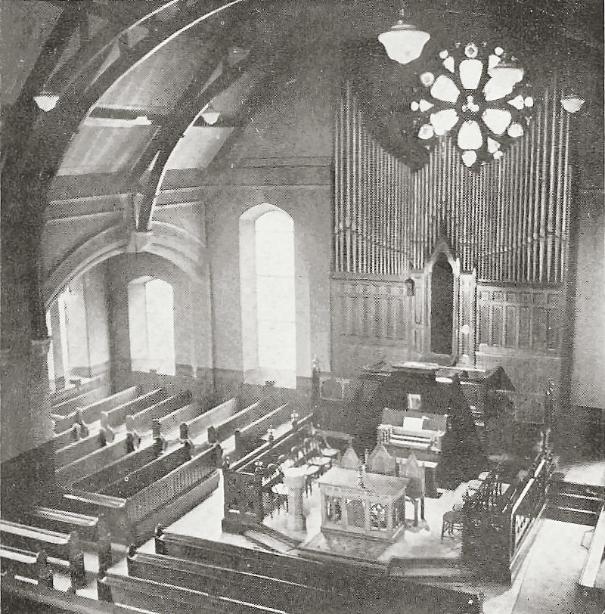
The working week very soon meant seven days and, in addition, several nights overtime. In fact, it soon became non stop working, and that, of course, told on the Church. Men had little or no opportunity to attend Church, and the women were busy preparing for their men folk coming home tired and hungry after their excessive labours. The organisations continued to function with skeleton staffs, and the ladies of the congregation devoted as much time as possible to providing comforts for the fighting men and to sending gifts. Looking back on those difficult and tragic days, one of the most surprising things is not that the Church carried on, but that it carried on so well. This fact speaks volumes for the faith, courage and loyalty of our Minister, Office Bearers and Members.
It was with feelings of dismay we heard on 23rd May, 1943, that Mr. Macdiarmid had received a call from Alness, Ross- shire, for he had ministered Gairbraid through a very difficult period, and many of us have the happiest memories of Mr. Macdiarmid’s presence in our midst, his humour, his breadth of outlook, and the quiet sincerity of his preaching. We still look back with pleasure to the busy but happy years spent under his leadership, and rejoice in the happiness and success that has attended him at Rosskeen, Alness.
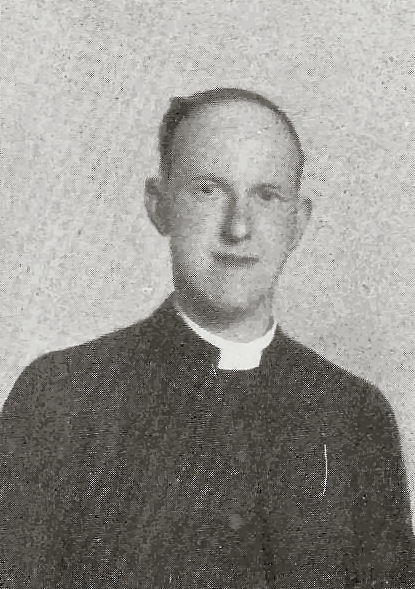
The vacancy committee meanwhile worked apace, and on the 5th March, 1944, Gairbraid was once more blessed with a young and energetic Minister, the Rev. James A. Watt, M.A., of Clune Park, Port-Glasgow. To meet the demands of a congregation such as Gairbraid, it quickly became evident that Mr. Watt was endowed with good health, energy and organising ability. These qualities were essential at any time, but they were indispensable in view of the war still raging. At once it was evident that he was awake to the opportunity that a new ministry offers, and the new vitality released was soon harnessed to the all round benefit of the congregation.
Very soon the Church Renovation and Redecoration Fund, started in 1939, was once again under way. With the coming of peace to Europe at last in 1945, and people gradually beginning to return to the normalities of every day existence, it was decided at a special meeting of the congregation on 3rd October, 1945 to go ahead, as soon as possible, with the Renovation Scheme, whereby all the woodwork around the chancel would be completely renewed, including the pulpit, and also the entire Church repainted including the pews—a very ambitious scheme costing about £2,500, but a necessary one. The enthusiasm of Mr. Watt and his Session Clerk was soon communicated to the various organisations and, with the help of grants from the Baird, Bellahouston and Ferguson Trusts, sufficient money was ingathered for the work to be carried out during the Summer months of 1946.
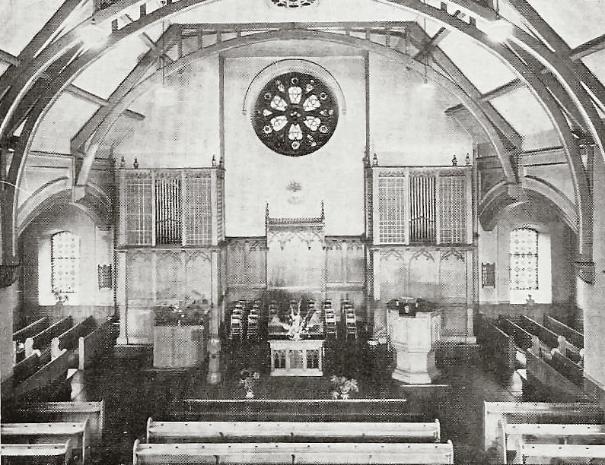
In the meantime Gairbraid men and women were returning home from the services having again acquitted themselves with courage and distinction in many theatres of war. Ten of our young men and women laid down their lives, and their names and photographs are recorded on a memorial plaque in the Church Hall.
At the re-opening of the newly decorated Church on the 23rd October, 1946, the
Rev. Dr. John White preached the Service of Dedication. It was immediately
evident that the result of the Church renovation was to restore the lost lustre
of the building and at the same time to impart to it a new freshness and charm.
Gairbraid is a Church that never has believed in giving its ministers much time for dreaming, promising nothing but hard work and, during the years when Rev. J. A. Watt was with us it goes without saying that it is impossible for anyone to assess fully the value of work done by him for Gairbraid Church, for he turned with rare vigour and buoyancy of spirit to the many problems which faced us in the post war era. It was therefore after a strenuous and successful ministry of nearly five years that Mr. Watt accepted a call from St Luke’s Church, Dundee, on 5th October, 1948, much to the dismay of all who worked with him.
THE PRESENT DAY
AFTER a brief vacancy, our present minister, the Rev. Wm. Thomson Revel, M.A., was called from Lonmay, Aberdeenshire. He was inducted to Gairbraid on the 28th April, 1949. Luckily for us, in keeping with our previous ministers, we were once again blessed with a keen and energetic young man. Not long after Mr. Revel’s induction he was to find that his new Ministry could not have commenced under more unfavourable circumstances It was discovered that dry rot had seriously affected the timbers of both the Church and Manse. To all of us this was dreadful news, but to Mr. Revel, who had to cope with this so early in his Ministry, it must have been heartrending. However, outwardly he appeared undaunted and by September, 1950, all the necessary repairs had been carried out at a cost of approximately £1,000.
It was a big commitment for a congregation such as ours to meet, but under Mr. Revel’s leadership a great financial effort was made by the congregation, and very shortly afterwards all the repairs were paid for. With this obstacle surmounted the general work of the Church next occupied Mr. Revel’s attention, and we soon found that our minister was a person of indefatigable energy. He spared no effort to carry out the work of Gairbraid Church and, at times to the detriment of his own health. His modern evangelistic approach appealed to the congregation and, more importantly, to the people of the district, with the result that our numbers kept growing steadily while our finances, which never had been strong owing to the periodic heavy demands made on them, increased in strength accordingly.
At a special meeting of the congregation on Tuesday, 24th February, 1953, it was decided to commemorate the Centenary of the Congregation by attending to a long overdue task, namely the recovering and relaying of the floor in the large Church Hall, the purchase of 300 seats, the fitting of a false ceiling to the roof of the Hall, and various other alterations, all at an estimated cost of £2000. With no money in the bank for such work of this magnitude it meant a long pull, a strong pull and a pull altogether by everyone, in order to effect this desirable target. Very soon a Centenary Fund was in operation and by June, 1954, sufficient money was ingathered for the work to be commenced.. By September 1954, the Church Halls were completely renovated and repainted, along with the 300 new seats. desired, and the result is that we now have one of the finest. suites of halls in the district and, in this present month of June, 1955 we see the close of the Centenary Fund, as all accounts have been paid at a total cost of £2,200.

This achievement is surely a tribute to the man who is influencing the character and life of our district at present, Our minister, the Rev. Wm Thomson Revel, M.A. who with his earnestness, his sagacity, his interest in the welfare of his people, his way of getting his own way when he wants it, and the certainty that, in the main, his way will he the best way, makes us assured that the congregation will continue to prosper, both spiritually and materially, under his leadership.
In conclusion we feel we may say that as we go through the records it is evident that the progress of the congregation, though slow at times, has been uninterrupted. Congregational life is not passed in unbroken sunshine any more than ordinary individual life, but looking back on the past history of the congregation, it is the sunshine arid the -gladness that largely predominate. This short sketch has - been - concerned mainly with the material things—the buildings, activities and numbers, but it is a story of expansion from the original 63 who first took communion to our present roll of 870. We hope, however, that through these pages - may be traced another story of conviction, courage_ and faith, - and a stor9 of people, like ourselves, who laboured in various ways for the furtherance of the Kingdom. Our Church was theirs; - their work has now come down to us as a heritage—a sacred trust which we must honour to keep faith with God. May we work for the Kingdom as those who have gone before did, and when we pass on, succeeding generations may say of us ‘They did their duty’.
CONCLUSION
WILLIAM THOMSON REVEL M.A.
SUCH a fascinating and interesting historical sketch of the first hundred years of the life of Gairbraid congregation could only be produced by many hours of untiring and patient research. Fortunately we had in our present Session Clerk, Mr. James Reid, a man capable of such a task, and for his excellent sketch we are sincerely grateful.
My purpose is to outline one or two of the outstanding features of the spiritual and social issues which have been in evidence since our Church was founded.
The life of Gairbraid congregation was begun in a period characterised by a tremendous desire for Church extension, not only in the home field, but also in the foreign field.
The desire to expand, especially in the field and the home church, is linked with the famous name of Thomas Chalmers. The eighteenth-century divines had concentrated on the God of might, power and wrath, but he rediscovered the God of love. This discovery greatly affected the policy of the church in the outstanding social issues of his day.
It was the time of the industrial revolution. Thousands of people were leaving the open spaces of the country and became huddled together in tiny houses round the factories, in the cities. Chalmers immediately saw that a Church had to be created which cared, not only for worship and sermons, but which would produce a parish system attending to the material welfare of the people as well. The Church of his day, therefore, became the pioneer of parish relief, and of education, and continued this last, until relieved of it by the government.
The later nineteenth century was also a time of great controversy, especially in the realm of science and religion. The idea of evolution, introduced by Charles Darwin caused a complete rethinking of many of the fundamental issues of religion.
After a long and bitter struggle, the Church wisely came to the conclusion that science, which is the study of the true facts of the universe, must, of necessity, be in line with the Creator, who is none other than the originator of truth itself.
The latter half of last century was a time when men tended to believe in the inevitability of progress to perfection. The events of the last fifty years, including two disastrous wars, have caused a limitation of this doctrine. It is only true when men co-operate with God in the creation of this ideal. When individual and national selfishness takes command, chaos results, and progress is slowed down.
Our task today is to learn from the experience of the past, and to build the future upon the quality of life seen in Jesus Christ. No barrier must arise between Church and Church, but all must unite in a world mission for the application of the will of - God to the daily issues of the everyday world. That was the purpose of the Master’s life, and it must be ours as well. During the last hundred years, the Churches have been realising this, and many, in Scotland, have united into one great fellowship. It is to be hoped that, within the next few years, the world councils of the Church achieve similar success.
We who are living to inaugurate the second-century of the life of our
congregation are offered tremendous opportunities. Those who have already
carried the torch during the last century have done so very effectively, amidst
a period of great spiritual, social and economic upheaval. As they knew God in
their lives, and so kept an even keel in the stormy waters of the world of
their day, so it is given to us to do likewise in the great events that, undoubtedly,
will arise in our day.
Our task ahead is to keep Christ as the master of our individual lives, and His Church as the pioneer of the highest welfare of the nations in every sphere of life. Thus will we show real gratitude to the makers of our Church, and thus alone will we build on sure foundation a Church, worthy of the future and of our glorious Master. Let us go forward with God in command with Christ in our heart, and with the Divine Spirit ever driving us on to victory.